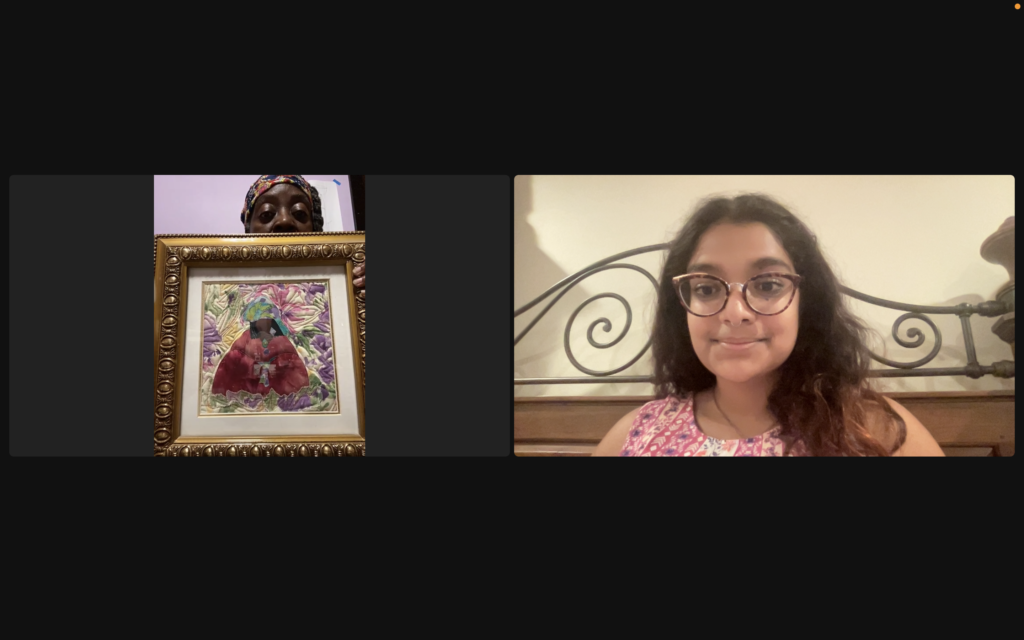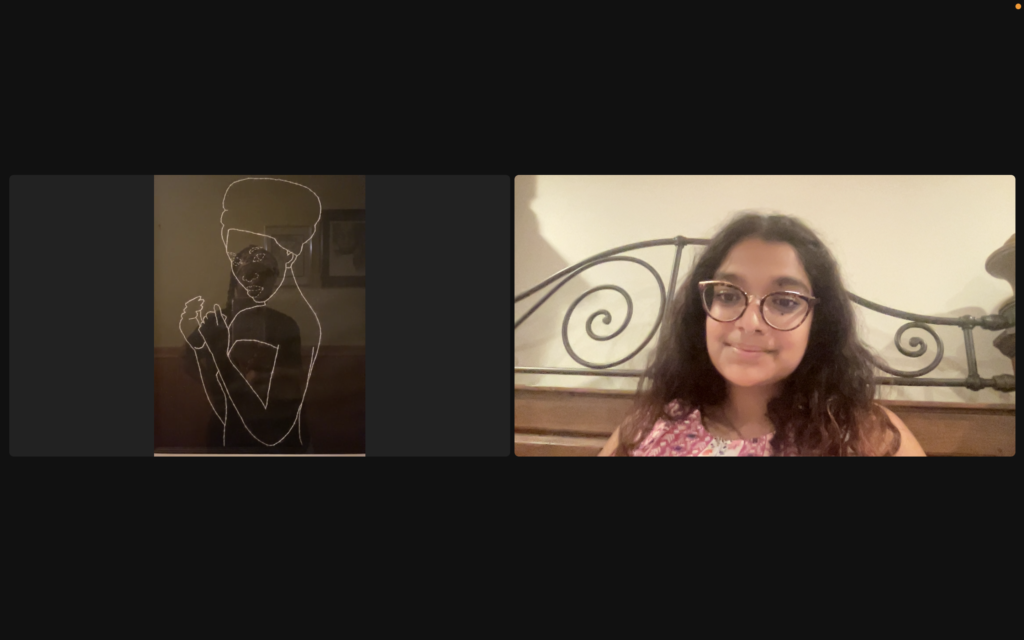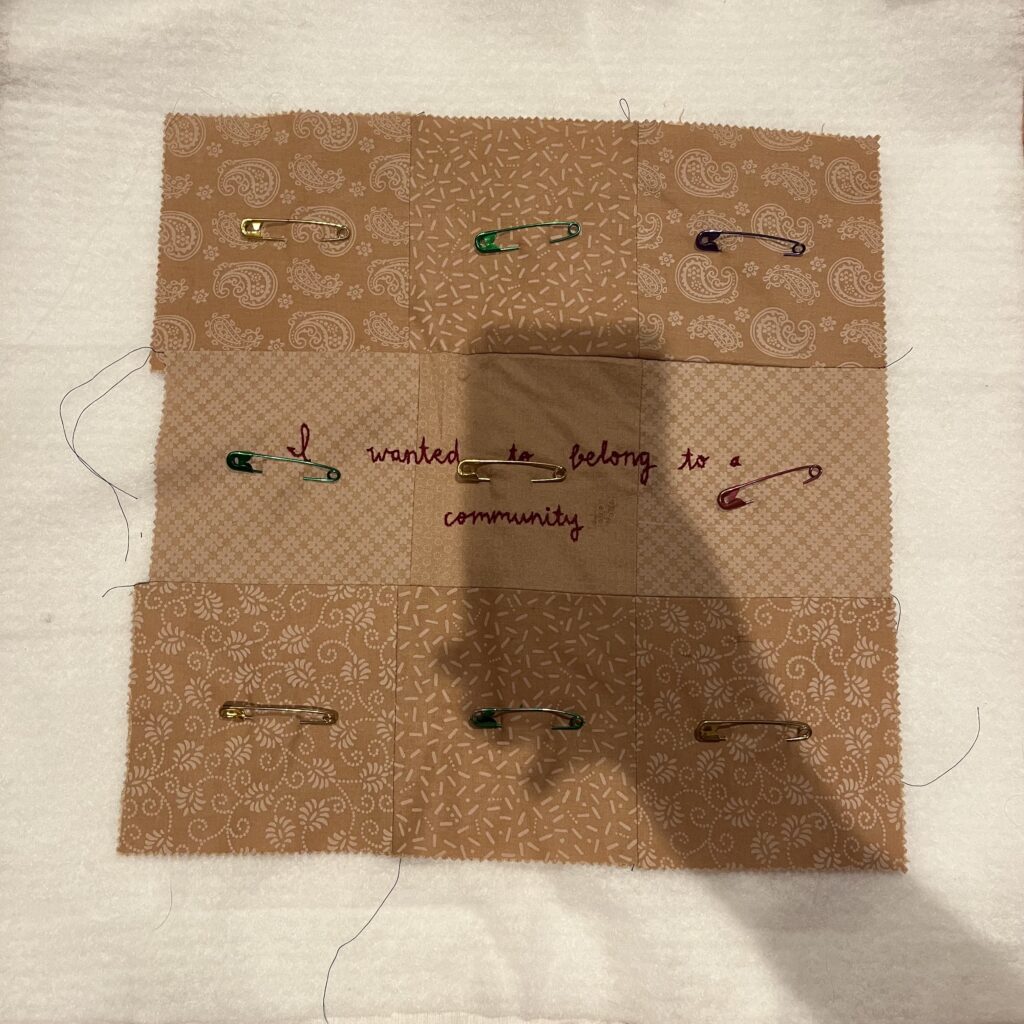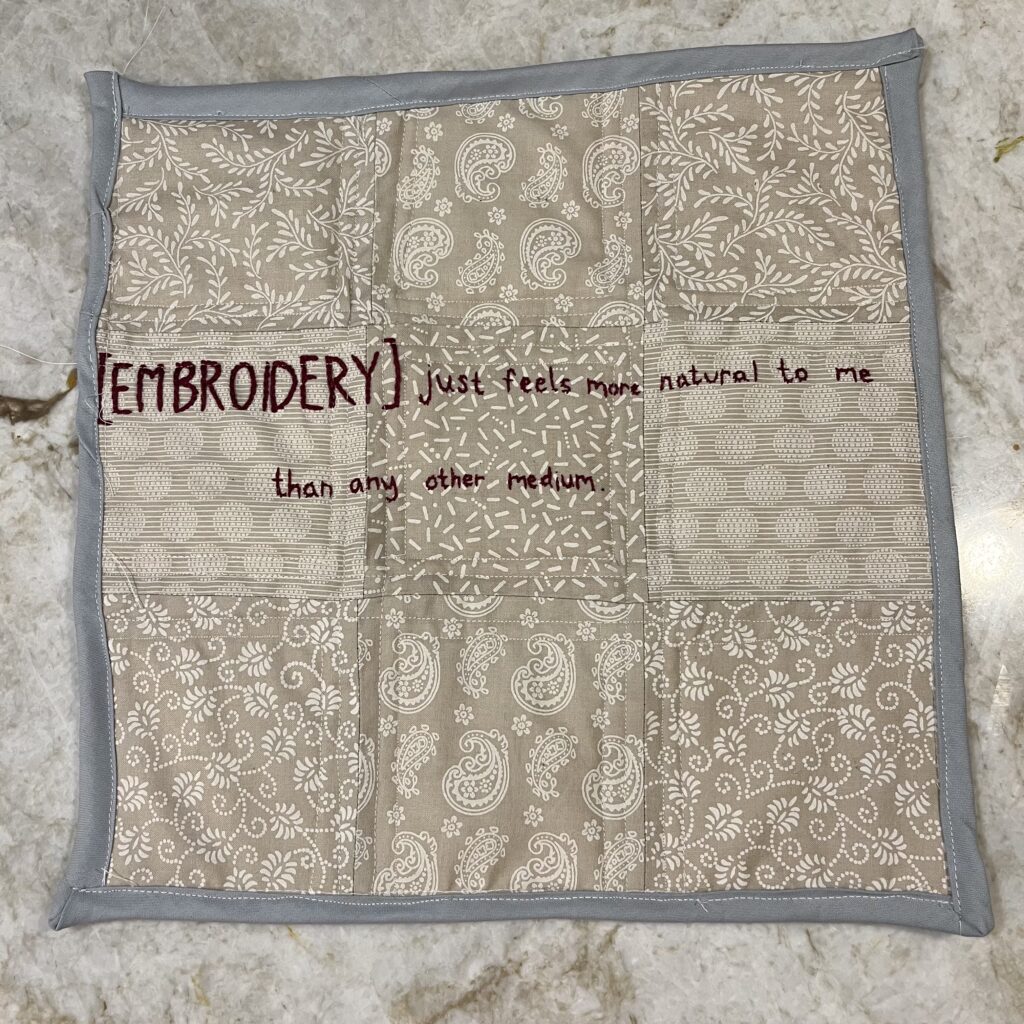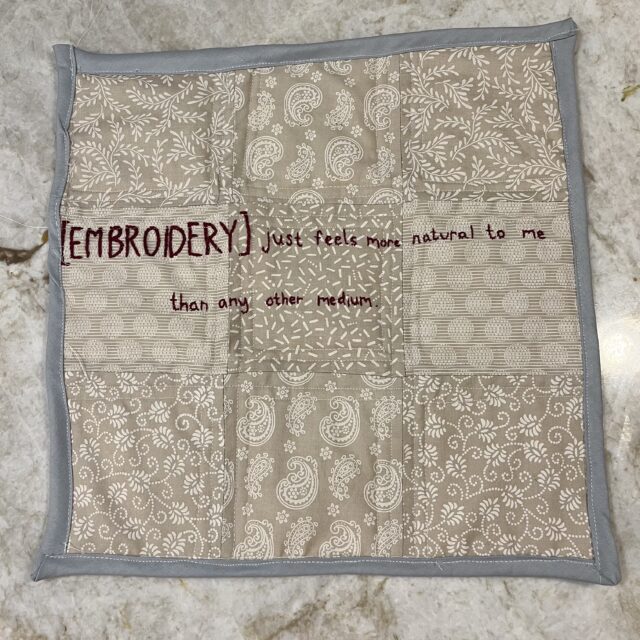Over the past month, I have been working on embroidering the pull quotes on my quilt tops, quilting all three layers of the quilt, and binding the quilts. Learning to quilt and bind the quilts has been a somewhat arduous process, since my quilting experience has been fairly limited to hand-quilting, and has mostly been in community settings where I have primarily worked on the quilt tops, and have had help to quilt and bind the quilts. Working on this project has taught me to quilt alone, and quilt on a machine, both of which were entirely new to me. At times this has been extremely frustrating, but it has also been quite gratifying to see the quilts come together, as wonky as they might be!
Unlike the process of quilting and binding, embroidery is something I have a decent amount of experience in. I have embroidered three of my quilt tops so far, and have found the process enjoyable. Due to the fact that I’m embroidering quotes onto fabric that has a self embossed design on it, I wanted the embroidery to be one color so that it would stand out more against the background. Because I don’t have to think about changing the color and am mainly using one stitch for most of the lettering, the embroidery process has been meditative and I’ve found it really grounding.
I’ve also completed more of my interviews. I recently interviewed Dorothy Burge, a community activist and quilter based in Chicago, who spoke to me about her quilting practice, and showed me some of the first quilts she made. I really enjoyed our conversation, and she echoed a lot of what I have heard in past interviews. Something that has been prevalent in many of my interviews is the intersections of quilting and other textile practices with feelings such as grief, or love. Dorothy Burge spoke to me about creating a quilt in the wake of Trayvon Martin’s death, and how the process of creating her quilt allowed her to process her grief. Similarly, in my interview with Melissa Blount, Blount spoke to me about her Black Lives Matter Witness Quilt as a meditative process that allowed her to grieve. Simultaneously, both Burge and Blount described quilting as an act of love, a love for their community, friends, and family, and an act that felt loving to themselves because of its meditative nature.
